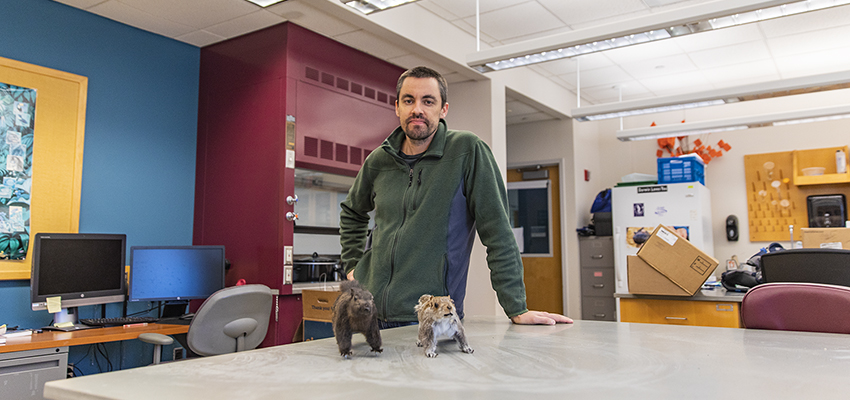
HWS News
16 October 2020 • Faculty • Research Across the Galaxy with HWS Physics
How do scientists detect stellar systems and planets light-years away? What are the chances those planets harbor life? How did those systems — and the universe itself — form?
During Homecoming and Family Weekend 2020, a virtual panel discussion explored some of the research that HWS faculty, staff and alums are undertaking to unravel the mysteries of space.
Earlier this year, observations with the Colleges’ Richard S. Perkin Observatory helped confirm the existence of a new extra-solar planet, a “mini-Neptune” planet orbiting once every 11 days around a cool, red star. Associate Professor of Physics Leslie Hebb, who co-authored an article detailing the research in the Astrophysical Journal, tuned into the panel discussion from the Perkin Observatory to share how the fluctuations in brightness around the star during the exoplanet’s orbit enabled her to detect it.
While the exoplanet is hotter than Venus, and therefore unlikely to host life, Hebb explained, “the fact that we can detect a planet from our telescope at HWS is pretty exciting and we are continuously looking for other planets around other stars — and we’re doing other kinds of transiting planet research at HWS.”
Max Jackson ’21, a physics and geoscience double major, explained his current project, an analysis of data from the Kepler telescope, which NASA launched in 2009 to discover Earth-size planets orbiting other stars. In his project, Jackson is graphing the fluctuations in brightness of the star Kepler-63 to determine the location and size of starspots.
Christopher Wilson ’16, now a Ph.D. candidate in physics at Cornell University, served as the panel’s moderator, steering the conversation through the process of these projects, breaking down the science for non-physicists, and contextualizing the conversation with explanations of interstellar research and questions about the hunt for extraterrestrial life. He also described his work on simulating how galaxies began to form in the early moments of the universe.
The Perkin Observatory is a teaching and outreach facility that provides students and community members with educational opportunities to observe, photograph and study objects trillions of miles from Earth. Created in 2015, the Observatory is named in honor of Richard S. Perkin, co-founder of the Perkin-Elmer Corporation, which designed and engineered precision high-tech devices utilized in space satellites and U2 spy planes, including optical components for the Viking Lander on Mars and Hubble Space Telescope. In recognition of his many contributions to astronomy and science, Perkin has a lunar impact crater on the Moon named after him. Perkin was the grandfather of Christopher Perkin ’95, a trustee of the Perkin Fund who was instrumental in securing the grant.
The photo above features HWS’ Richard S. Perkin Observatory on campus.



